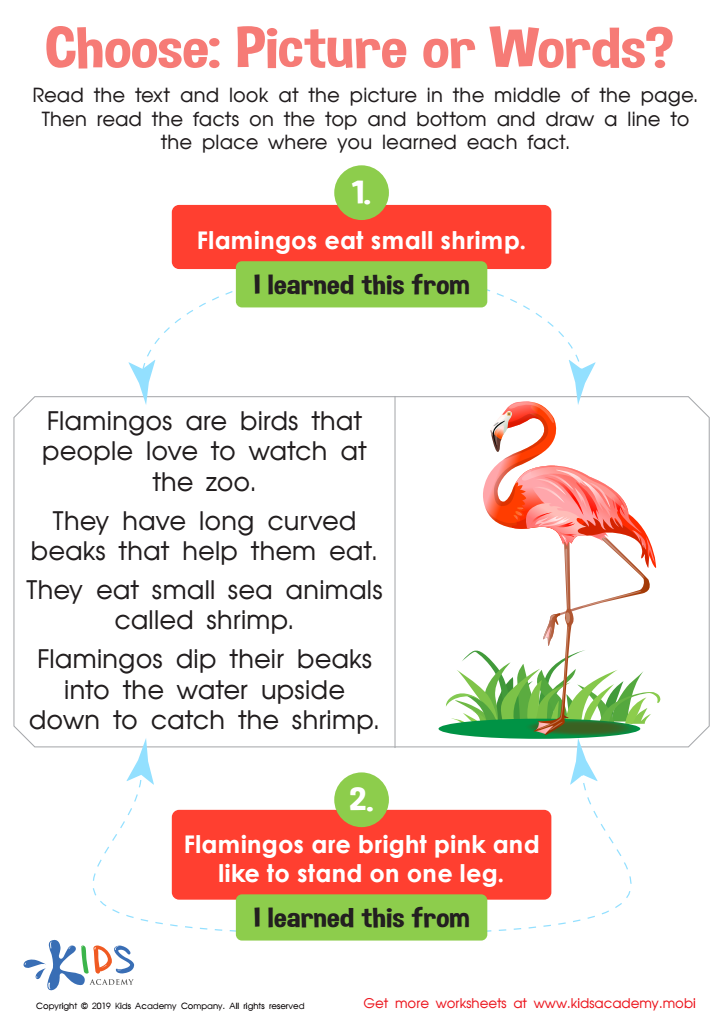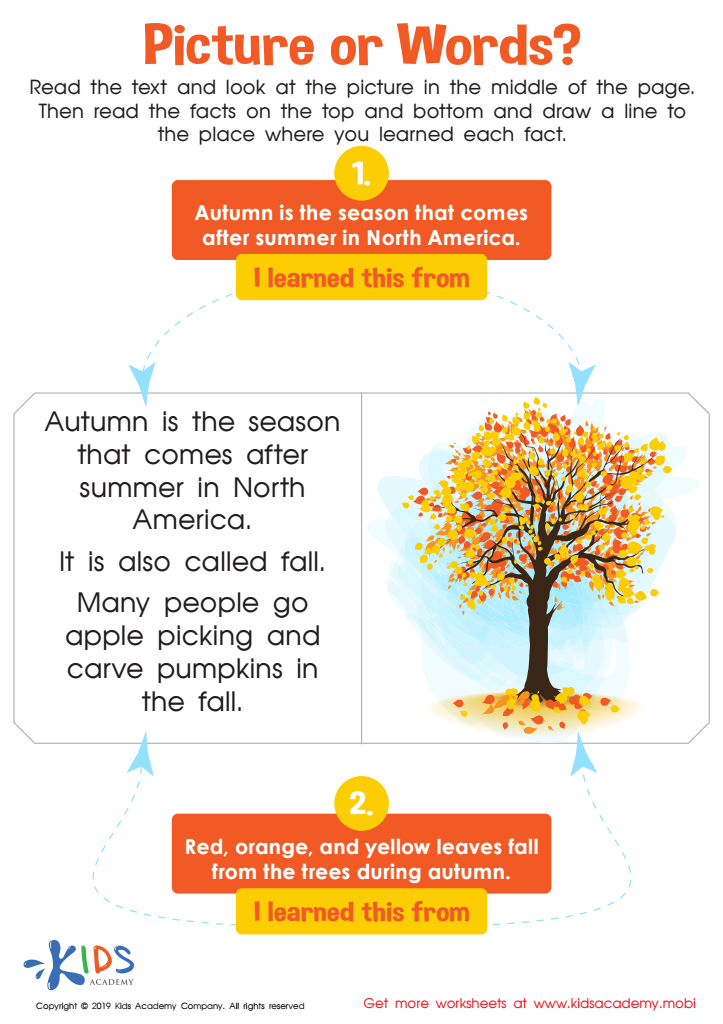Illustrations in Informational Texts - Lesson for Grade 1, Chapter - Key Ideas and Details/ Craft and Structure
In the "Illustrations in Informational Texts" lesson, first-grade students embark on an enlightening journey exploring the crucial role illustrations play in understanding informational texts. This engaging lesson, nestled under the chapters Key Ideas and Details and Craft and Structure in the Reading Informational Texts unit, aims to sharpen students' analytical skills through a series of interactive activities.
Students will begin with the "Choose Picture Words Worksheet," where they learn to associate images with specific vocabulary, enhancing their comprehension of textual themes. The journey continues with the "Picture Words Worksheet," reinforcing their ability to interpret information through visual cues.
Delving deeper, the "Pelicans Worksheet" introduces students to the symbiotic relationship between text and illustrations, encouraging them to draw knowledge from both to gain a holistic understanding of the subject matter. The culmination of this lesson, "Using Text Features and Information from Illustrations vs. Words," challenges students to critically compare and contrast the information presented through illustrations versus textual content.
Understanding the interplay between text and illustrations is pivotal for young readers.
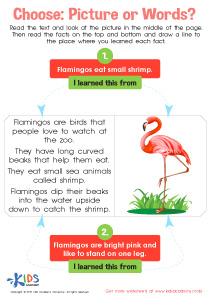
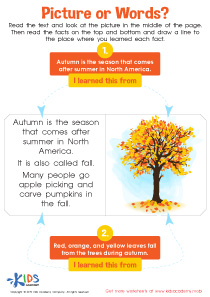
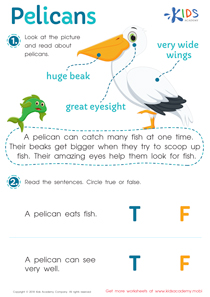
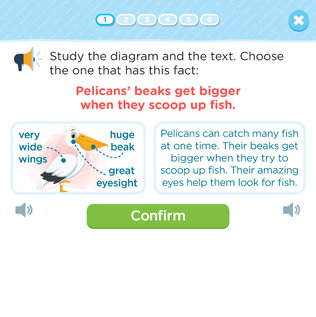
-
Activity 1 / Choose Picture Words Worksheet
There is so much value in pictures when children are learning to read. That's why so many early readers are full of colorful pictures and images. Early readers use prior knowledge and pictures to create meaning in their heads as they're reading, and combined with words they learn to recognize and decode, have greater comprehension ability. This free PDF worksheet will let them see just how much they can learn from both pictures and words, as they'll choose one to answer how they learned the given facts about flamingoes.
-
Activity 2 / Picture Words Worksheet
Pictures are an important facet of early learning-to-read skills. Children use pictures to connect with their prior knowledge and make meaning of the words they're reading, and it's important we remind them to use all the reading resources they can when they're looking at passages and trying to understand what they mean. With this free PDF, they'll be able to learn through pictures and through words, and they'll respond with which method they used for the fact-learning with two questions. It's a great way to impress that all the information in text is valuable—pictures included!
-
Activity 3 / Pelicans Worksheet
Many informational texts include pictures, sidebars, or diagrams to further explain the topic. Teach your child to properly read and analyze informational passages by providing him or her with ample practice! This printable worksheet will come in handy to teach these necessary reading skills and will serve to be an interesting lesson in animal science as well! Read all about pelicans and view the graph to answer the questions. Answer below the paragraph by responding to whether each statement is true or false.
-
Activity 4 / Using Text Features and Information from Illustrations vs. Words - Quiz
In this assessment, students will use text features of informational texts to locate key facts and distinguish between information provided in illustrations versus information provided by words.
